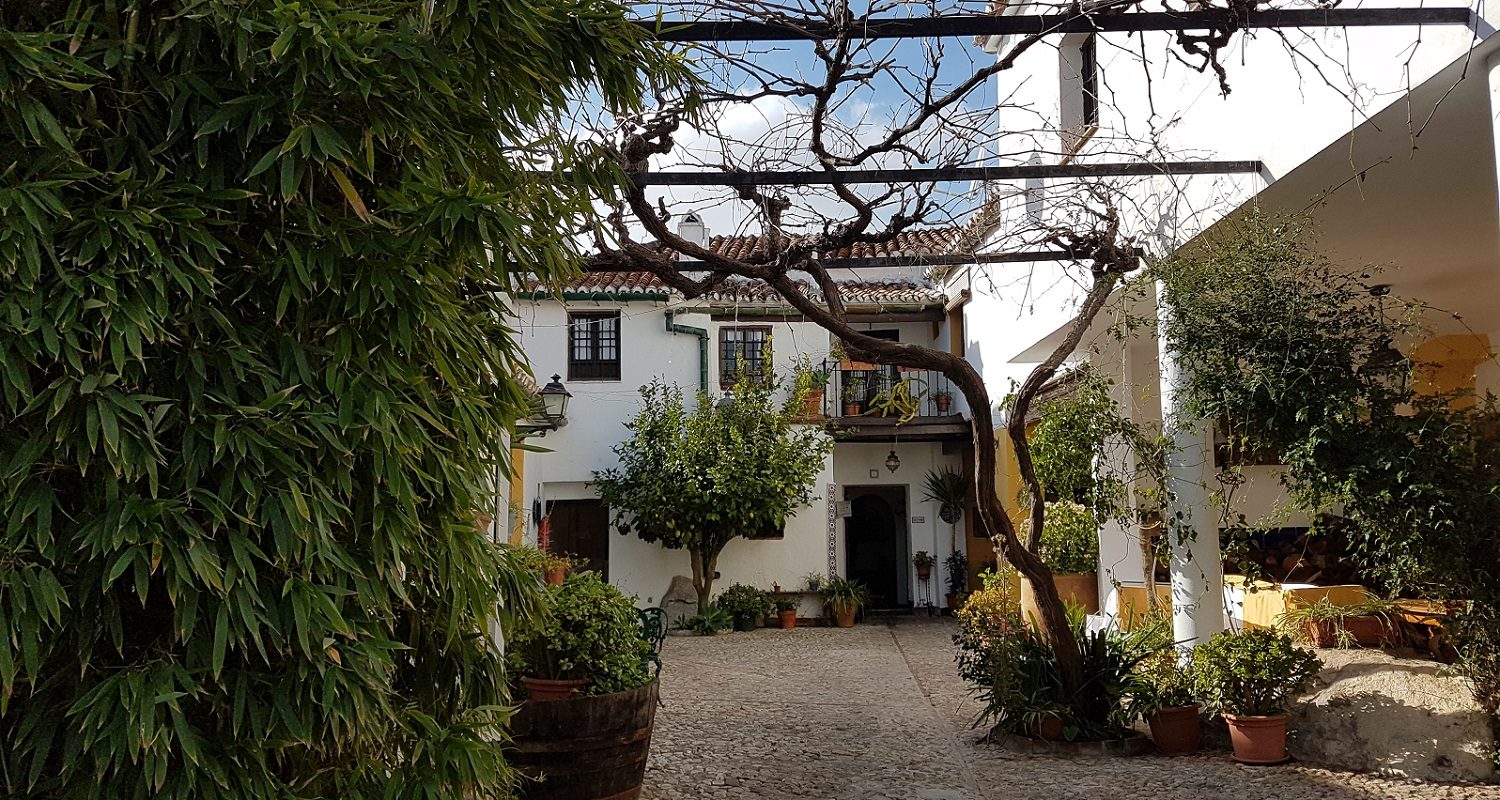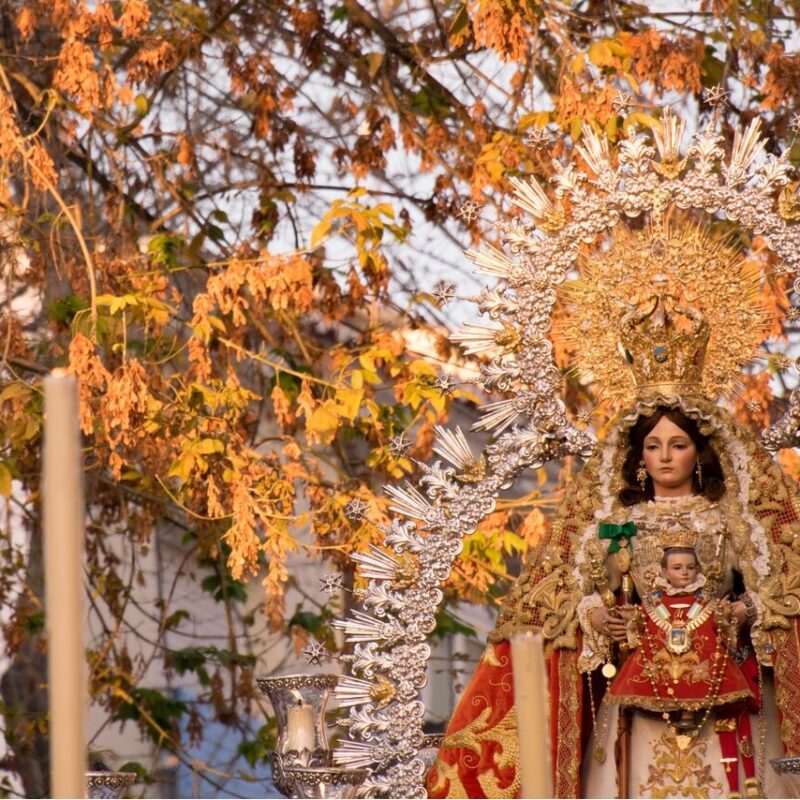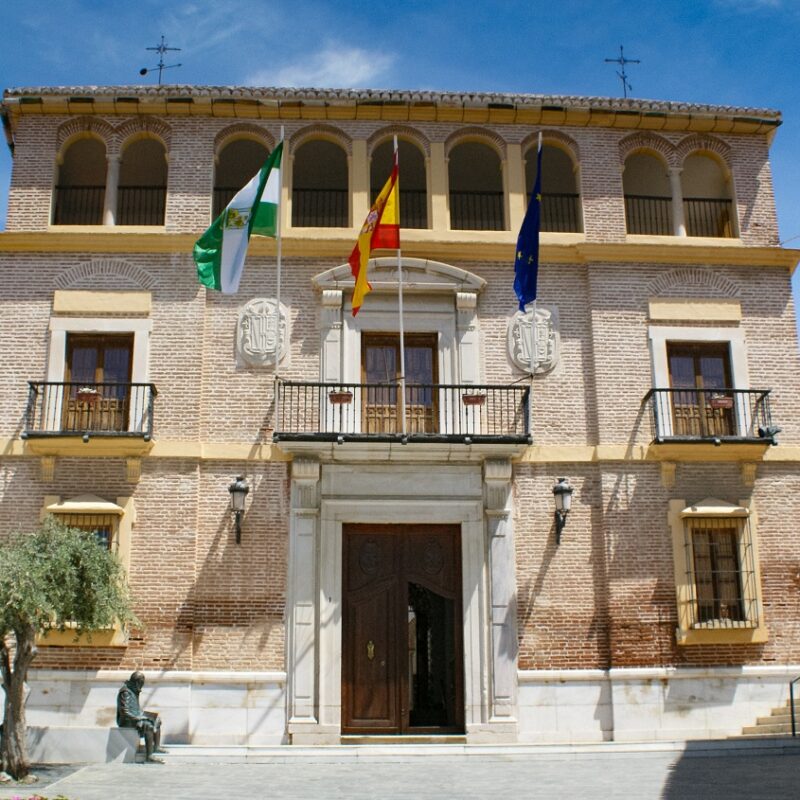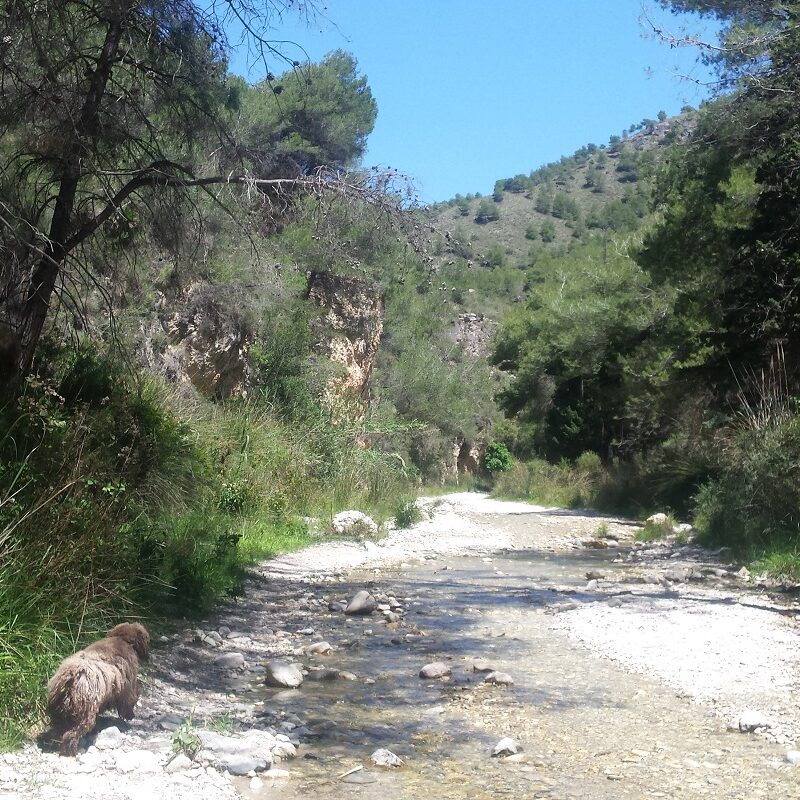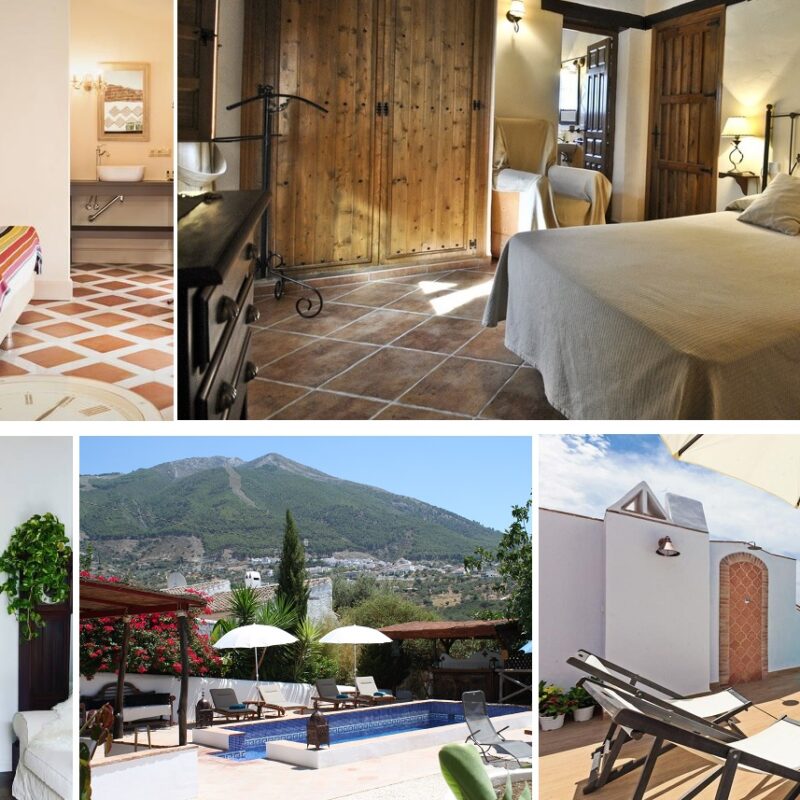Velez-Malaga is the capital of the Axarquia region of southern Spain. With its evocative Moorish history and charming, whitewashed villages set amidst a stunning landscape of dramatic mountain peaks it’s a wonderfully atmospheric and authentic corner of Andalucia.
The region of the Axarquia is made up of 31 villages stretching up from the coast to the foothills of the Sierra Tejeda. The mountainous white villages are: Alcaucin, Alfarnate, Alfarnatejo, Algarrobo, Almachar, Archez, Arenas, Benagalbon, Benajarafe, Benamargosa, Benaque, Cajiz, Canillas de Aceituno, Canillas de Albaida, Colmenar, Comares, Competa, Corumbela, Cutar, Daimalos, El Borge, Frigiliana, Iznate, La Vinuela, Los Romanes, Macharaviaya, Moclinejo, Mondron, Pasada de Grandillo and Los Captios, Periana, Puente de Manuel, Rio Gordo, Rubite, Salares, Sedella, Sayalonga, Totalan, Trapiche, Triana and Zorrilla and the capital Velez Malaga.
The others are on the coast: Almayate, Benajarafe, Benamocarra, Chilches, Caleta de Velez, Maro, Rincon de la Victoria, Torre del Mar, Torrox Costa and Nerja.
To help you decide what to see and do while you’re in the region we’ve handily summarised five incredible driving routes that focus on either history and architecture or local produce, from grapes, raisins and avocados to olive oil.
Mudejar Route
Route: Arenas, Archez, Salares, Canillas de Aceituno
The Mudejar Route explores the Muslim and Christian architecture and art that flourished in Andalucia from the time of the Islamic occupation of Spain. It takes in four main towns and villages in the foothills of the beautiful Sierra Tejeda: Arenas, Archez, Salares and Canillas de Aceituno. Examples of Mudejar architecture can be observed in each of these locations with ornately carved wooden ceilings in many churches and buildings, and old mosque minarets rising above churches.
Begin the windy but breathtakingly beautiful route in Arenas, just 10km north-east of Velez and journey through Daimalos and Corumbela to reach Archez, Salares and finally Canillas de Aceituno. Make sure you stop in each village to walk the narrow streets and take in the stunning examples of Mudejar style that is completely unique to this region of Andalucia. Although it’s under 30km from Arenas to Canillas de Aceituno expect it to take around an hour in a car (without stopping) due to the windy nature of the roads.
Route of Sun & Avocados
Route: Rincon de la Victoria, Macharaviaya, Velez-Malaga, Benamocarra, Iznate, Benamargosa
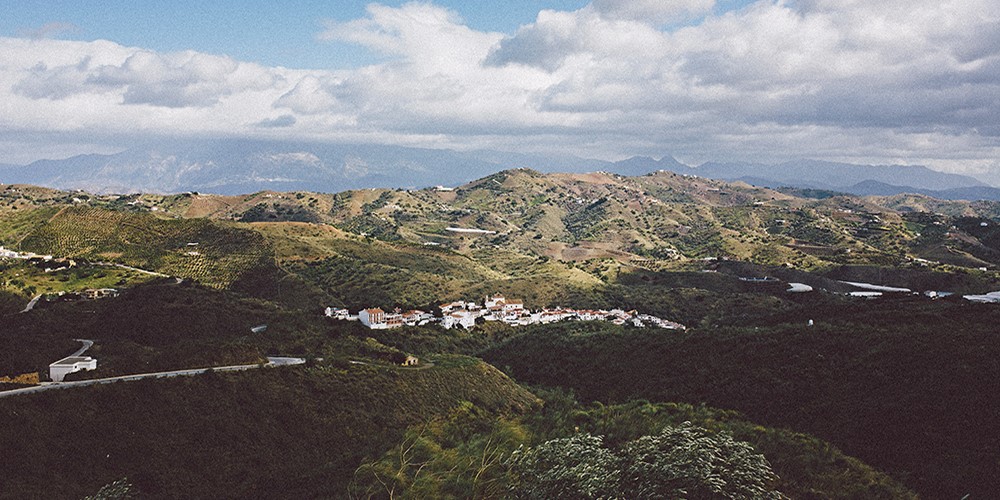
Aptly named, the Route of Sun & Avocado combines the sunny Mediterranean coastline and the agricultural richness of the Rio Velez valley. This route takes in long stretches of sunny shore with old watchtowers looking out to sea that once protected local settlements from sea-born attacks. As opposed to some of the popular routes in the area this is not one to tick off in a day; it’s over 75km long and too jam-packed full of things to do. We’ve grouped together the highlights from each town and village so you can pick and choose where to visit and get to know the region like a local – and, of course, sample as many avocado-based dishes as you can get your hands on!
At Rincon de la Victoria there are long sandy beaches and interesting caves at Las Cuevas de la Tesoro where it’s rumoured gold was buried long ago amidst the stalactites and underground pools. As well as hidden treasure, there are beautiful beaches to be enjoyed and many bars and restaurants beach-side.
Just 12km inland is Macharaviaya. Built on the site of an old Arab settlement it is steeped in history and many artists and writers have made their home here for that reason. Its pretty, narrow streets still have their original 18th-century flagstones and many of the buildings are built in the Moorish style.
As you drive from Macharaviaya en route to the next stop of Velez you pass through Torre del Mar, which is a popular summer spot for Spaniards. The long stretches of well-kept beach have running and cycling tracks alongside as well as beach volleyball and outdoor play areas for children. Although it’s a busy spot, it’s mainly locals that crowd the beaches and it’s well worth a visit. A great place to pass a hot day in summer.
Next up is our very own Velez-Malaga, where the historical centre bursts with charm. Built on a hill and crowned with the old fort the town leads the eye up and over the terracotta rooftops and across to the many church spires that dot the town. Ensure you walk through the San Francisco area to Plaza de la Constitucion where there are historic monuments and typical tapas bars and restaurants. On Thursdays there’s a weekly market where locals convene to buy fresh produce, plants and clothing whilst the daily Mercado Municipal hosts an array of butchers, fishmongers and artisan produce stalls.
Benamocarra is a beautiful village inland just 7km to the north west of Velez. It is a typical Andalucian village of whitewashed houses and narrow cobbled streets which host an unusual amount of fiestas, even by Andalucian standards. There’s a lovely 16th-century Gothic church with a Mudejar tower in the centre of the town, as well as a small museum for the composer Eduardo Ocon who was born in the village in the 1800s.
Iznate is another great example of the region’s typical white villages. Narrow steep streets reward tired legs with stunning panoramic views over the surrounding mountain ranges and agricultural landscape. It is also famous for the Muscatel grape (used for making the famous sweet vino de Malaga) which is celebrated in true Andalucian style each year with a fiesta in early August.
The final stop on the Sun & Avocado Route is Benamargosa. Famous for its wonderful fruits and vegetables the town produces an abundance of avocados, olives, citrus fruit, mangoes and vines. In April the Fiesta del Campo celebrates all this amazing produce through folklore performances and, of course, food and wine.
Route of Sun & Wine
Route: Algarrobo, Sayalonga, Competa, Canillas de Albaida, Torrox, Nerja, Frigiliana

Sun-soaked beaches and small villages nestled in the foothills of the Sierra Almijara make up the Route of Sun & Wine. As the name would suggest the main export of the region’s towns and villages is the grape from which many great wines are made. With around 25km of beaches stretching east of Algarrobo to Nerja there are plenty of great places to make the most of the fabulously sunny year-round climate. There’s so much to see and do on this route so we would suggest picking one or two things from the itinerary below and tackle them as day trips. This way you can take your time over all the activities, get a true feeling of the surrounding Andalucian coastline and countryside, and of course enjoy the wine!
Algarrobo heralds the start of the Route of Sun & Wine and is split into two distinct areas. The town, or pueblo, sits further inland with panoramic views out to the ocean and a myriad of winding narrow streets and plenty of whitewashed buildings. The coast on the other hand sees high rise buildings dominating the landscape. Between the two districts there’s plenty to amuse you for an afternoon or so with the meandering Rio Algarrobo playing host to a variety of lovely riverside restaurants as well as an outdoor pool and tropical gardens.
Taking the inland road north of Algarrobo leads you to sleepy Sayalonga. The village still grows citrus fruits, olives and an abundance of grapes which are harvested for wine-making as it has for generations. Unspoilt countryside surrounds the village with plenty of wildlife to see on spectacular walks and cycle routes around the village.
Competa is situated at the foothills of the Sierra Almijara and brimming with culture, charm and beauty. The residents have capitalised on the amazing surroundings of mountains and lush fertile lands by introducing activities such as kayaking, yoga, horse riding and hiking for visitors. To accompany the varied entertainment on offer there’s a number of decent eating (and drinking) options. The popularity of this village gives it a slightly more touristy feel than most other parts of the Axarquia, but it still makes for a great day trip.
Canillas de Albaida sits in the Sierra Almijara mountain range and has many winding narrow streets. If you want to visit one village that fits the bill of the typical Andalucian, white-washed town then this is a good place to start – its name in Arabic literally means ‘the white one’.
Returning back to the coast and taking the road from Algarrobo to Torrox and Nerja will draw you through Mezquitilla and Lagos which still have an old fishing village charm to them in contrast to the more built-up resorts.
Torrox itself is also split into two areas and has a similar feel to Algarrobo with the town sitting higher than the coast with spectacular views out to sea. A bustling square is the main focus of town and a popular place to enjoy a drink and tapas out of the burning heat of a summers day. Mudejar architecture features in Torrox with the imposing design of Nuestra Señora de la Encarnacion. The coastal area of town has typical high rise apartments overlooking the sandy beach as well as attractive promenades lined with restaurants and bars thronging with a mixture of locals and tourists in the summer months.
Along from Torrox is the popular resort of Nerja. With just over 20,000 inhabitants it’s a sizeable place sitting right on the coastline. The mountain range of the Sierra Almijara that dominates the Sun & Wine Route finishes in Nerja before dropping dramatically into the sea with spectacular cliffs giving way to sandy bays. The Balcon de Europa is a popular mirador (viewing point) with great views out to sea and along this dramatic stretch of coastline. Caves were discovered nearby in the 1950s with artefacts dating from the Bronze Age and Palaeolithic paintings adorning some walls. In contrast to the beaches already mentioned, Nerja and nearby Maro offer crystal clear coves which can be accessed by windy paths and are great for snorkelling.
Finally, and last stop on the Sun & Wine Route is the popular village of Frigiliana. It’s a village of outstanding beauty and has won many awards to recognise this. The lively ‘Festival of the Three Cultures’ happens in late August and lasts for four days, celebrating the confluence of Muslim, Jewish and Christian cultures in Frigiliana. If you’re able to time your trip around the festival it’s a wonderful mix of music, food, wine and street performances.
Route of Oil & Mountains
Route: La Viñuela, Alcaucin, Periana, Alfarnate, Alfarnatejo, Riogordo, Colmenar
This popular route takes you deep into the mountainous interior of the Axarquia. The main crop grown on the rugged hillsides is, of course, olives which stretch in orderly lines as far as the eye can see. Within the bustling mountain villages you can find not only superb local produce to devour but lively festivals celebrating everything from chestnuts and olive oil to gazpacho.
You begin the route in La Viñuela, just over 15km north of Velez, famous for its production of raisins. The Fiesta de la Pasa takes place in mid-September with a 2-day festival to celebrate the grape harvest – and consequent drying – with music, dancing and plenty of food and wine. Two tributary rivers for the Rio Velez run through La Viñuela and have now been dammed to create a reservoir more commonly referred to as Lake Viñuela.
To the north east is Alcaucin, a picturesque village which has as its backdrop an unusual U-shaped rock formation known as El Boquete de Zafarraya. This serves as an attractive way in which to cross from Malaga province and into Granada; a popular bus route now links Velez and its surrounding villages to Granada. A notable date to pass through Alcaucin is at the end of October where the locals come together to celebrate the chestnut harvest. Thousands of these dried fruits are devoured with locally grown and roasted sweet potatoes and plenty of wine.
Periana is a pretty town further inland and with amazing views across to the mountain ranges in the north and the coast line and Lake Viñuela to the south. The town had to be rebuilt in the late 1880s after an earthquake in the area which saw some of the Moorish architectural features lost during the rebuild. To the north of the village are some Moorish sulphurous baths – the Baños de Vilo (Periana.es) – which were used for their medicinal properties until the 19th century. They have now been restored and make a great visit. The village’s main claim to fame comes from the quality peaches and Verdal olive oil it produces. Two local cooperatives organise a festival to celebrate this unique olive oil in the springtime.
Sitting at the northerly tip of the Axarquia region, Alfarnate is the highest town in the region at just over 900 metres above sea level. The economy, like much of the area, is based on agriculture with the hero products being olives, almonds and cherries.
The small village of Alfarnatejo sits amidst stunning mountainous scenery with the peaks of El Gallo and Mount Chamizo rising to over 1,600 metres. The village hosts a popular annual festival to celebrate the Gazpacho de los Tres Golpes where, as you can imagine, a lot of gazpacho is consumed and dancing lasts long into the night.
Making your way back to the coast brings you to Riogordo, a pretty village of Moorish origin with many 16th-century buildings and a wide central square. As well as the Easter week processions they also hold a snail festival in May. Cooking the snails up with stock and serving with beer and wine, the food is (again) accompanied by much dancing.
The name of the most westerly town in Axarquia is Colmenar or ‘beehive’ in English and is the last stop on this route. As you’d expect, many beehives surround the town and honey is a major export for the townspeople. Also produced in the area are many cold cuts of meat and sausages which (as is becoming a theme here) is celebrated by an annual fiesta.
Route of the Raisin
Route: Totalan, Comares, Cútar, El Borge, Almachar, Moclinejo
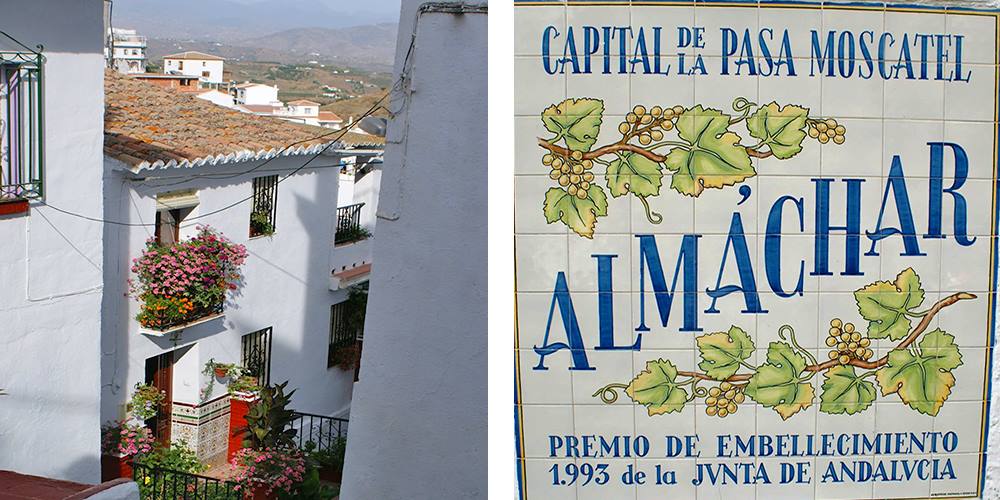
The villages within the raisin route are surrounded by vineyards and, at the right time of the year, drying beds for the raisins can be seen across the landscape. This beautiful collection of towns and villages takes you through the river valleys to hilltop white villages and lush vineyards and is well worth getting to at least one or two of these spots.
The route begins in Totalan, a small village to the north of Rincon de la Victoria. Typical of Andalucian villages it has many narrow streets and white washed walls. Considering its close proximity to Malaga and the fact that many people moved here in the post-war period to look for work, the village still retains its old world, small settlement charm and hosts a popular gastronomic festival in November. The dish of Chanfaina is a popular classic dish made for the busy farmers working the land and a must try if you visit. Heavy in potato, tripe, black pudding and sausages the dish fueled the workers for hours on end. As with most Andalucian festivities the dish is accompanied by wine, beer and dancing in the streets.
Comares is a beautiful hill top town with stunning views of the surrounding fincas (or farms) and steep streets that beg to be explored across town. The tight-knit and friendly community are welcoming and many families sell their produce from their doorsteps. There is a Moorish style church and fortress in the town typical of the region. The main draw is Verdiales which is the traditional music of the region. Born from the need to entertain the farmhands working in nearby fincas this music is important to the local community and still celebrated with a fiesta in July.
A pretty but small village of Cutar lies on the Raisin route famous for its Moroccan festivities; known as the Monfi Fiesta held in October each year. A bazaar is recreated in the centre of town where visitors can sample typical Moroccan food, handicrafts, listen to traditional music and watch performers.
Clinging to the valley through which the Borge river runs is the village of El Borge. Of Moorish origin the usual architectural styles feature in this small town. But it is most renowned for the festival of the raisin which is held each year in September attracting thousands of visitors. People are treated to the raisins themselves as well as wine made from them and other local foods. As expected this is all washed down with yet more wine and beer and accompanied with dancing and music.
The neighbouring town of Almachar has many areas to explore on a day trip. The town square has lovely views across the river basin and down towards El Borge. There’s also an informative raisin museum which plots the history of the raisin in this area of Axarquia and the role every member of the family plays in its harvest. The festival of Ajoblanco in September encourages visitors to walk the streets following temporary signs and sampling a glass of this cold almond-garlic soup with grapes every now and then.
Last up on the raisin route is Moclinejo. It has long been a popular spot to live due to its proximity to Malaga and wonderful views across the coastline. The church of Santa Maria is of Moorish origin with arches and bell towers typical of this style of architecture. A popular fiesta of folklore and wine is held each September with much wine and local gastronomic delights consumed followed, again, by music and dancing.
Like the sounds of these? We are also gathering together guides to each of the villages in the Axarquia, have a look here.

